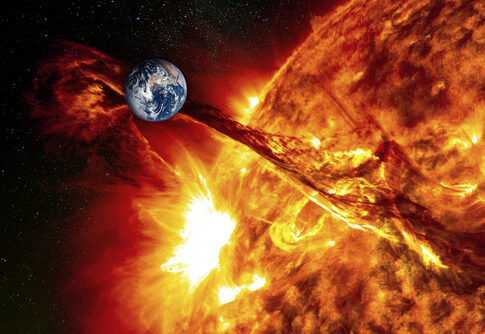In a move that has sparked significant controversy, NASA is set to launch an artificial star into Earth's orbit at the staggering cost of $19.5 million. This initiative, part of the Landolt project, aims to improve the measurement accuracy of real stars and aid in the study of dark energy. However, many Republicans view this expenditure as another example of wasteful government spending.
Critics argue that while scientific advancement is important, the current economic climate demands more prudent use of taxpayer dollars. With inflation and national debt at alarming levels, the allocation of nearly $20 million to a project that simulates a star seems highly questionable. They believe these funds could be better spent addressing pressing domestic issues such as infrastructure, healthcare, and national security.
Cloudy with a chance of new stars!
Named RCW 7, the nebula in this #HubbleFriday view contains the gas and dust needed to form stars. Under the influence of gravity, parts of the nebula's clouds collapse until they coalesce into young, developing stars: https://t.co/jbtRvPAXvX pic.twitter.com/JS6XtgaUZR
— Hubble (@NASAHubble) June 21, 2024
Supporters of the project argue that the artificial star will provide invaluable data that could lead to significant scientific breakthroughs. NASA's deputy director, David Ciardi, stated that the project could enhance the precision of stellar brightness measurements by more than a factor of ten. This improvement could have far-reaching implications for our understanding of the universe, particularly in studying dark energy.
Despite these potential benefits, the timing and cost of the project remain contentious. Many conservatives feel that the government's priorities are misplaced, especially given the numerous challenges facing the nation. They call for greater accountability and fiscal responsibility in government-funded projects, emphasizing that every dollar spent should be scrutinized and justified.
WOW – incredibly beautiful new #JWST image! These new data are giving insight into newborn stars ✨Read more: https://t.co/fxeNpZmtmS pic.twitter.com/Td0CvkkttX
— Dr. Amber Straughn (she/her/hers) (@astraughnomer) June 20, 2024
The broader issue at play is the perception of government overreach and mismanagement of funds. The artificial star project is seen by some as a symbol of how government agencies can become detached from the practical needs of the citizenry. This sentiment has fueled calls for reform and increased oversight to ensure that taxpayer money is spent wisely and effectively.
Furthermore, there is a growing concern about the transparency of such projects. Critics demand more detailed explanations of the project's necessity and expected outcomes. They argue that without clear, tangible benefits, such expenditures are difficult to justify to the public, who ultimately foot the bill.
In light of these concerns, Republicans are urging NASA and other government agencies to re-evaluate their spending priorities. They advocate for a more balanced approach that considers both scientific advancement and fiscal responsibility. This, they argue, is essential for maintaining public trust and ensuring that government actions align with the needs and values of the American people.
As the debate continues, it is clear that the launch of an artificial star is more than a scientific endeavor—it is a reflection of the ongoing struggle over government spending and accountability. Whether this project will yield the promised scientific benefits remains to be seen, but the controversy it has sparked highlights the need for careful consideration of how taxpayer dollars are allocated in pursuit of progress.

